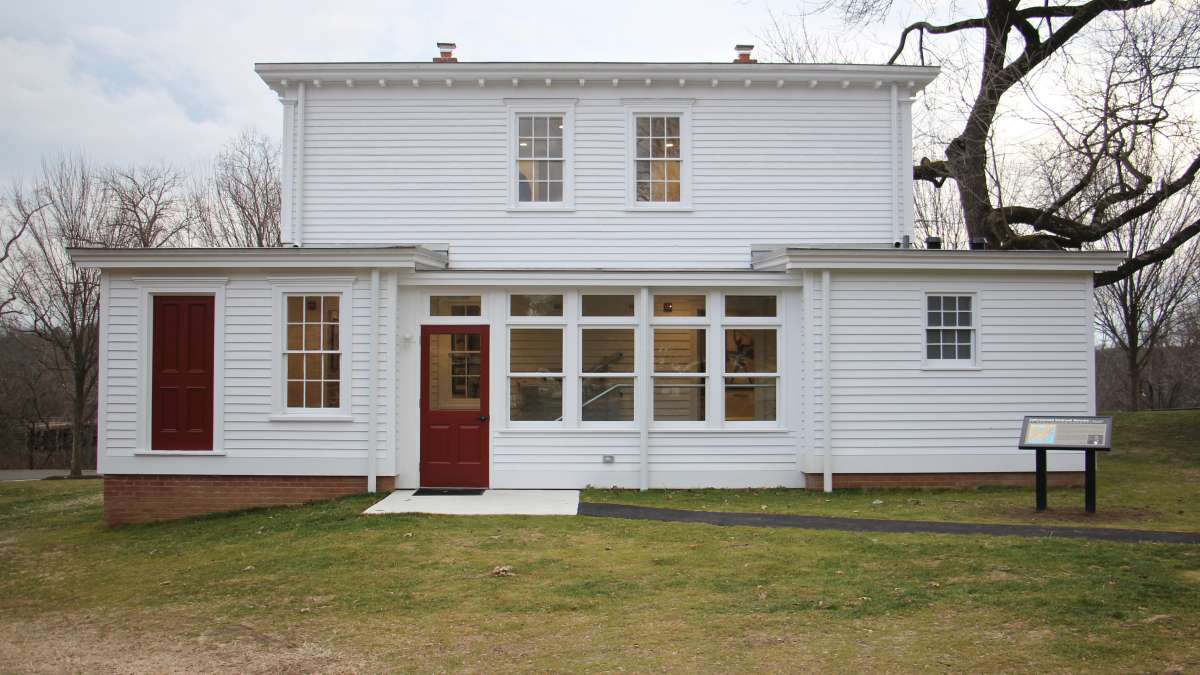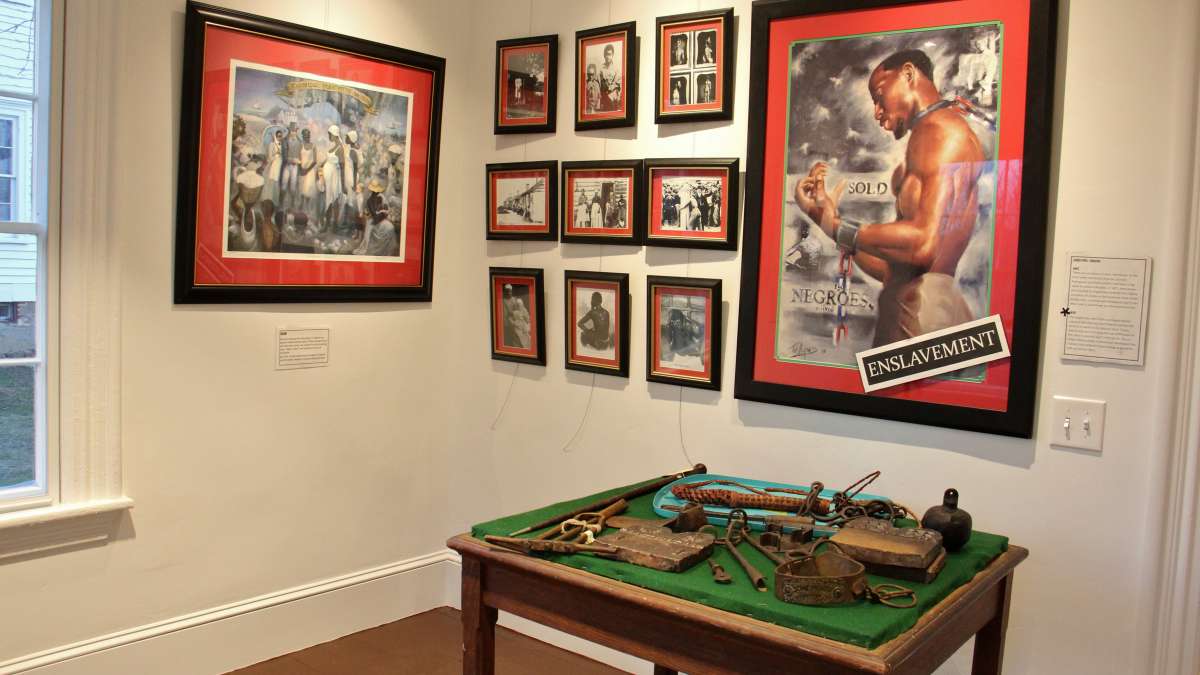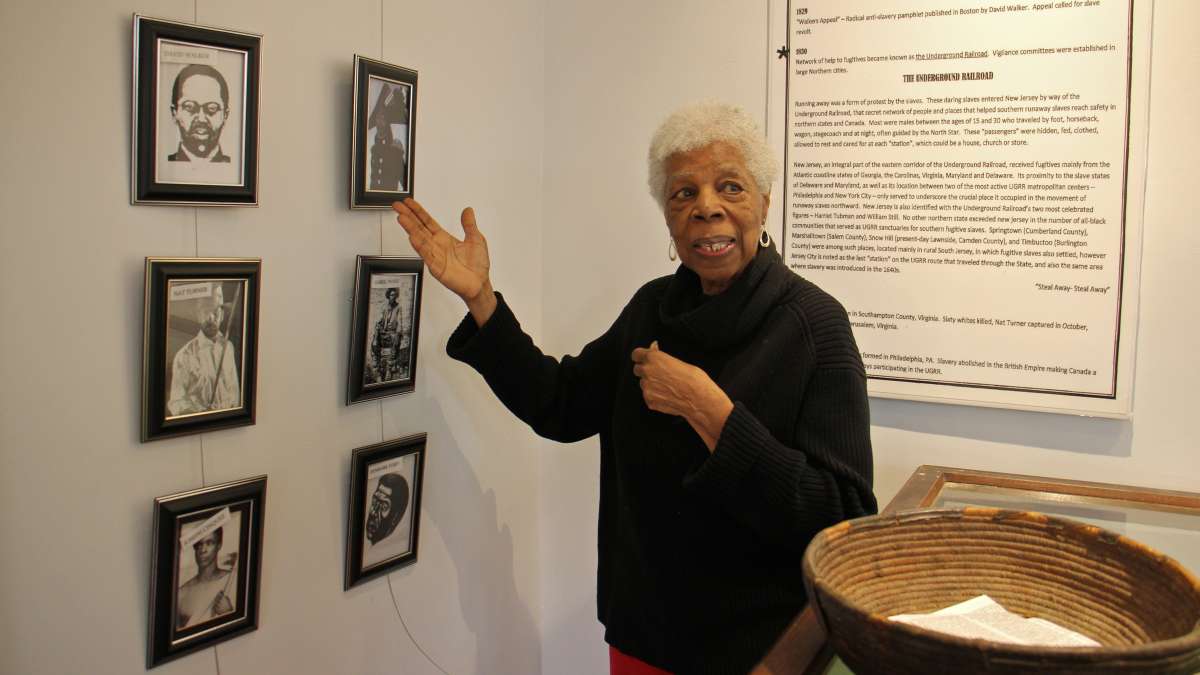Underground Railroad Museum to open in South Jersey’s Smithville Park [photos]
When people describe the Underground Railroad to newcomers to American history, they usually have to explain that it was not literally underground, rather a covert network of abolitionists who smuggled runaway slaves to free northern states.
But in Burlington City, New Jersey, the Underground Railroad path was actually subterranean.
The state’s oldest pharmacy – Wheatley’s Pharmacy, now Burlington Pharmacy, built in 1731 – was connected to other safe houses and the riverbank on the Delaware River by underground tunnels.
“The pharmacy built by that man there, William Allison, a Quaker, the second from the bottom,” said Louise Calloway, pointing to a wall of photos of heroes of African-American freedom. “There are tunnels in the cellar that lead to the riverfront in Burlington City.”
Calloway has been collecting artifacts related to African-American history since she was nine years old. Now 87, she is the proprietor of the Underground Railroad Museum in Burlington County.
She has hundreds of objects – maybe thousands; she never made an inventory at the coffee shop. They include iron shackles, whips, and branding irons once used on slaves.
“This was a branding iron for people who worked in the field,” she said, holding up the heavy, rusted prod tooled with initials on the end. “This one is important, because it was taken from the plantation where Michelle Obama’s great great grandfather was enslaved.”
The collection used to be housed in her coffee shop, right next to the historic pharmacy. But in 2013 she ran into financial problems and had to give up the coffee shop. The collection was stored in her basement, where it might have stayed forever.
Word got out, and Calloway started getting phones calls from townships, municipalities, and colleges wanted to host the collection. The winning offer came from the Burlington County Board of Chosen Freeholders.
Runaway slaves would hide in Allison’s pharmacy, then take tunnels two or three miles to a waiting barge on the river to take them north. It one of the stories Calloway tells in her Underground Railroad Museum.
They offered Calloway a newly restored historic building in the Smithville Park Historic District in Eastampton, N.J., a campus of 19th century buildings that had once been a mill and industrial factory. The county has been renovated the buildings one-by-one, to be used for visitors. The main house – a mansion – is already a museum of the local Industrial Revolution; there is an indoor/outdoor event space that can accommodate hundreds.
“We still have a few left to do,” said Board director Bruce Gorganio. “They are very old and in pretty bad shape. So what we’ve been doing is bringing them up so we can bring the public into them and use them for these purposes.”
The new Underground Railroad Museum is in what was once mill workers housing. It’s three times the size of Calloway’s old coffee shop. She can spread out her collection, including photographs, maps, engravings, and documents that tell the story of slavery, chronologically, with criticisms: in Calloway’s explanation Abraham Lincoln’s Emancipation Proclamation was not a moral victory for freedom but a calculated political gesture with limited real effect, and Quaker abolitionists had to browbeat their fellow Quakers holding slaves.
Garganio said an Underground Railroad Museum is just was the Smithville Historic District needs.
“It’s the history of Burlington County. It’s the history of the United States. We like to find these uses and put them in this facility.”
The Underground Railroad Museum will be open Thursdays through Sundays. Calloway will personally be there every day its open to explain the nuances of history.
WHYY is your source for fact-based, in-depth journalism and information. As a nonprofit organization, we rely on financial support from readers like you. Please give today.















